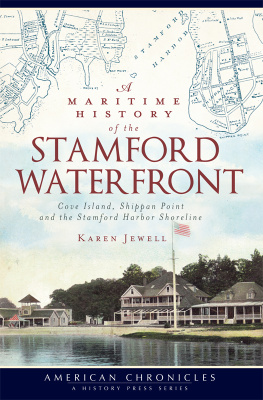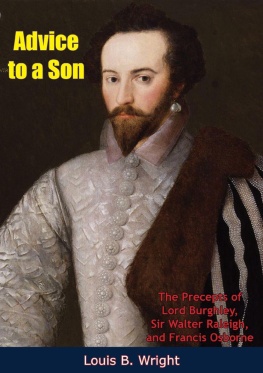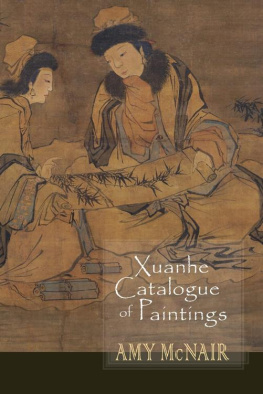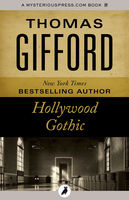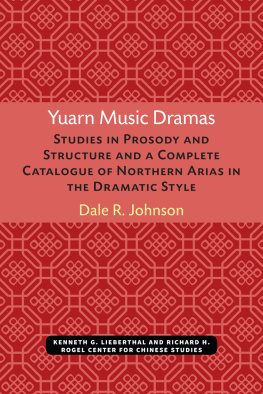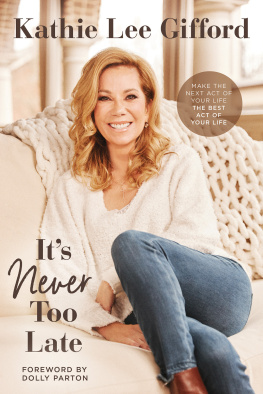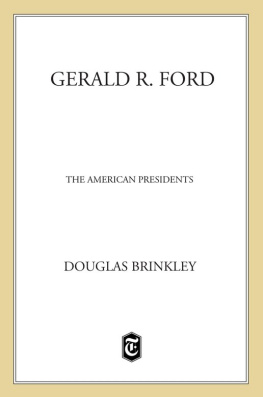A DESCRIPTIVE CATALOGUE OF THE MUSIC COLLECTION AT BURGHLEY HOUSE, STAMFORD
Portrait of David Garrick by Angelica Kaufman (see page 39ff)
Reproduced by permission of the Burghley House Preservation Trust Limited
A Descriptive Catalogue
of the
Music Collection
at
Burghley House, Stamford
Compiled by
Gerald Gifford
First published 2002 by Ashgate Publishing
Reissued 2018 by Routledge
2 Park Square, Milton Park, Abingdon, Oxon OX14 4RN
711 ThirdAvenue, New York, NY 10017, USA
Routledge is an imprint of the Taylor & Francis Group, an informa business
Copyright Gerald Gifford, 2002
The author has asserted his right under the Copyright, Designs and Patents Act, 1988, to be identified as the author of this work.
All rights reserved. No part of this book may be reprinted or reproduced or utilised in any form or by any electronic, mechanical, or other means, now known or hereafter invented, including photocopying and recording, or in any information storage or retrieval system, without permission in writing from the publishers.
Notice:
Product or corporate names may be trademarks or registered trademarks, and are used only for identification and explanation without intent to infringe.
Publishers Note
The publisher has gone to great lengths to ensure the quality of this reprint but points out that some imperfections in the original copies may be apparent.
Disclaimer
The publisher has made every effort to trace copyright holders and welcomes correspondence from those they have been unable to contact.
A Library of Congress record exists under LC control number: 2001022815
Typeset in Times by Manton Typesetters, Louth, Lincolnshire, UK.
ISBN 13: 978-1-138-70421-3 (hbk)
ISBN 13: 978-1-315-20280-8 (ebk)
To the memory of
Dr Charles Cudworth
of Cambridge
A true friend of Burghley
Contents
I remain indebted to the late David, Sixth Marquess of Exeter KCMG (d. 1981) for kindly granting permission that I might undertake study of the Burghley House music collection, and also to the late Dr Charles Cudworth (d. 1977) for his early guidance and encouragement in my work. Dr Cudworth was, for many, the embodiment of a latter-day eighteenth-century English musical personality, and it was fitting that he should have been the first to undertake research into this most important private, and largely eighteenth century focused, collection of music.
For over twenty years, my own research at Burghley House has, pleasingly, spanned not only the musicological and historical study of the numerous printed and manuscript holdings (some of which have now been republished in facsimile editions) but also the performance, recording and broadcasting of many works (particularly those for early keyboard instruments and the organ). The impeccable book restoration and conservation work undertaken by Blair Jeary at Burghley House in the late 1990s enabled the present catalogue of the music collection to be undertaken, and a broader view of its evident scope, strengths and importance can now be fully perceived.
I should like to express my thanks to Mr Anthony Forbes, Chairman, and the members of the Burghley House Preservation Trust Limited, for their willingness to grant permission for my continuing research, and to Mr Simon and Lady Victoria Leatham and their staff for many kindnesses on my visits to Burghley House. I am especially grateful to Jon Culverhouse, formerly House Manager, and more recently Curator of Burghley House, for his informed guidance on a range of issues relating to the immediate context of the music collection, and for providing facilities to assist me in my work. I should also like to record my gratitude to Michael Scott, former Estate Manager, for much assistance during my early association with the Burghley House music collection. For many years the late Dr Eric Till carried out historical research of great insight and accomplishment both with regard to Burghley House, and also its association with the neighbouring town of Stamford. His assistance in identifying important reference sources was of great benefit to my own research, particularly with regard to materials preserved in the Exeter Archives.
I wish to acknowledge my thanks to the Royal College of Music for granting to me a period of one terms study leave in order that the formal cataloguing of the Burghley House music collection might begin, and also to my colleague Christopher Bornet, the Colleges Reference Librarian, for much-valued advice and encouragement. Meredith McFarlane, Charlotte Munro and Claire Nelson, present and former doctoral research students of mine at the Royal College of Music, have provided important references and information with regard to the Ninth Earl of Exeters music collection, and for these I express my grateful thanks. I am especially indebted to Meredith McFarlane for her painstaking work in compiling an extensive general bibliography relating to the Ninth Earls life and musical profile and for sharing with me, as her supervisor, the emerging drafts of sections relevant to the Burghley House music collection in her forthcoming doctoral dissertation The String Quartet in late Eighteenth-Century England: a practical and contextual examination. I am also most grateful for the assistance of Stephen Astley, Assistant Curator (Drawings) of the Sir John Soanes Museum, and Margaret Cranmer, Rowe Music Librarian, Kings College, Cambridge.
To David and Marion Caldow, Professor David Dilks and Glen Innes I express my sincerest thanks for their individual and widely ranging expressions of interest in this project; these have been both opportune and of the greatest encouragement. Finally, to Rachel Lynch and her collegues at Ashgate Publishing Limited is due my lasting gratitude for the care and expertise which has been devoted to the production of this book.
All musical, pictorial and textual illustrations from the Burghley House Collection have been reproduced by kind permission of the Burghley House Preservation Trust Limited.
Burghley House, Stamford, was built between 1555 and 1587 for William Cecil, Lord Burghley, the Lord High Treasurer to Queen Elizabeth I. It is one of Englands greatest houses, and one which, because of the national importance of its most distinguished first owner, could be expected to be brimming with music from the so-called Golden Age of English music the Elizabethan era. Sadly, it is not. No surviving original sources of music from this time have been preserved at Burghley House, and furthermore there is only speculative evidence of musical performance there at that time. But there is ample evidence of musical activity in later periods.
The Library at Burghley House contains an extensive collection of manuscript and printed music dating from about 1650 to 1850, substantially formed during the latter part of the eighteenth century by the Ninth Earl of Exeter, though in totality the outcome of acquisitions by various members of the family from the time of the Fifth Earl in the seventeenth century to that of the Third Marquess, in the nineteenth century. The extent and quality of the holding ascribed to Brownlow, Ninth Earl of Exeter, who held his title between 1754 and 1793, lies at the centre of the collection, and indicates an enthusiastic yet perceptive and informed taste. The inclusion of several rare and in some cases apparently unique volumes gives his collection, in particular, great significance. But, as the following account will show, there are a number of other strengths too.






